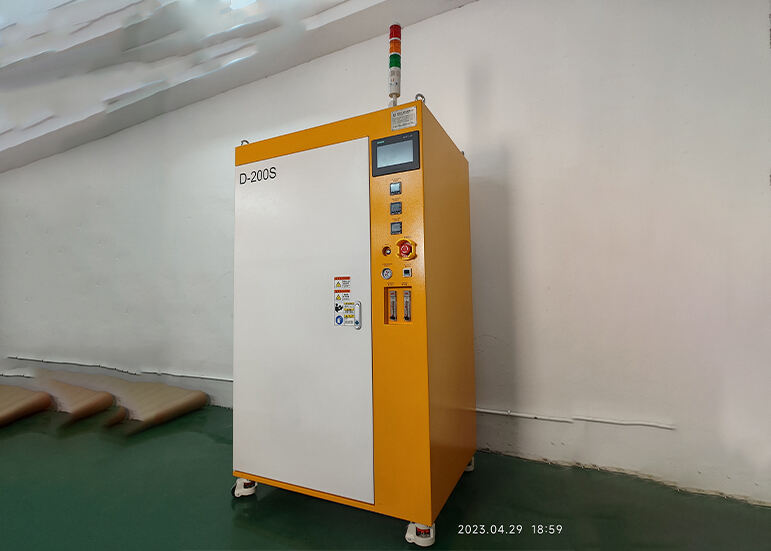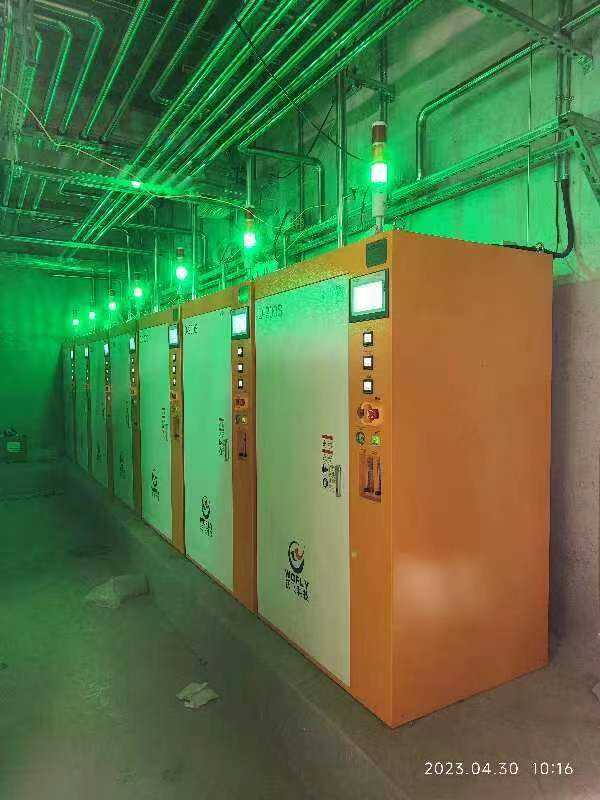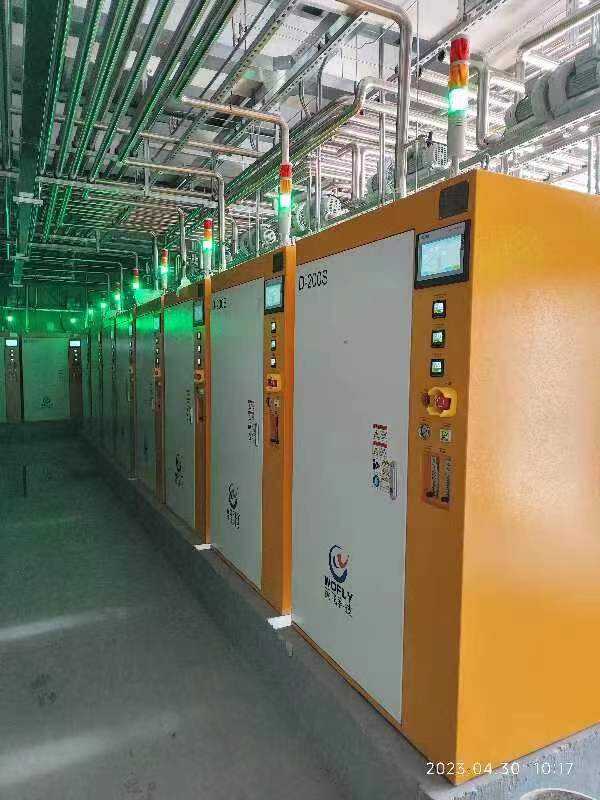Hệ thống xử lý khí thải Scrubber địa phương
Hệ thống xử lý khí thải Local Scrubber là thiết bị xử lý khí thải đuôi được sử dụng rộng rãi trong các ngành công nghiệp như năng lượng mặt trời quang điện, bán dẫn và vi điện tử. Nó chủ yếu được sử dụng để xử lý các khí nguy hiểm dư thừa phát sinh trong các ngành công nghiệp này, bao gồm nhưng không giới hạn ở SiH4, SiH2Cl2, PH3, B2H6, TEOS, H2, CO, NF3, SF6, C2F6, WF6, NH3, N2O và các loại khác. Nếu không được xử lý đúng cách, những khí này có thể gây nguy hiểm cho môi trường và sức khỏe con người.
Hệ thống xử lý khí thải Local Scrubber hiệu quả giảm thiểu các khí thải độc hại này thông qua các bước và phương pháp xử lý cụ thể như đốt cháy, làm mát và rửa bằng nước. Nguyên lý hoạt động của nó có thể bao gồm việc dẫn khí thải đến buồng đốt để đốt cháy, chuyển hóa chất hữu cơ và các chất dễ cháy khác thành các chất vô hại. Sau đó, khí thải đi qua thiết bị làm mát để hạ nhiệt độ, giúp thuận lợi cho quá trình xử lý rửa bằng nước tiếp theo. Cuối cùng, khí thải đi vào tháp rửa nước, nơi các chất độc hại được hấp thụ bởi hơi nước và hòa trộn với nước, từ đó được loại bỏ một cách hiệu quả.
Mục đích của hệ thống này là ngăn chặn các rò rỉ khí không mong muốn, sự tích tụ cục bộ hoặc các phản ứng tương hỗ trong quá trình xả thải, từ đó tránh được các vấn đề tiềm ẩn như tắc nghẽn đường ống, ăn mòn đường ống, rò rỉ và cháy nổ. Khí đã được xử lý sau đó sẽ được nối với các hệ thống xử lý khác để thực hiện xử lý thứ cấp, giảm tải cho các hệ thống xử lý tiếp theo và đáp ứng yêu cầu kiểm soát ô nhiễm không khí và tiêu chuẩn phát thải trong các ngành công nghiệp cụ thể.
Tổng thể mà nói, hệ thống xử lý khí thải Local Scrubber là một giải pháp hiệu quả và thân thiện với môi trường để xử lý khí thải cuối cùng, đóng vai trò quan trọng trong việc đảm bảo an toàn sản xuất, bảo vệ môi trường và đảm bảo sức khỏe con người.
Hệ thống xử lý khí thải Local Scrubber hoạt động dựa trên sự kết hợp của các nguyên tắc hóa học và vật lý để xử lý hiệu quả các khí độc hại được tạo ra trong các quy trình công nghiệp khác nhau. Các tình huống ứng dụng là đa dạng, đặc biệt trong các ngành công nghiệp mà việc phát thải khí nguy hiểm là không thể tránh khỏi, chẳng hạn như năng lượng mặt trời quang điện, bán dẫn và vi điện tử.

Nguyên lý hoạt động của Local Scrubber nằm ở khả năng bắt giữ và trung hòa các khí độc hại thông qua một loạt các bước xử lý. Ban đầu, khí thải được dẫn vào đơn vị làm sạch, nơi nó gặp dung dịch làm sạch, thường là một hỗn hợp chất lỏng được thiết kế để phản ứng với các loại khí cụ thể có mặt. Khi khí đi qua dung dịch làm sạch, các thành phần độc hại sẽ bị hấp thụ hoặc phản ứng hóa học với dung dịch, chuyển chúng thành các chất an toàn hơn hoặc loại bỏ chúng khỏi luồng khí.
Việc chọn dung dịch rửa là rất quan trọng, vì nó phải được điều chỉnh để xử lý hiệu quả các khí thải cụ thể từ ngành công nghiệp. Ví dụ, trong ngành công nghiệp pin mặt trời và bán dẫn, các loại khí như SiH4, SiH2Cl2, PH3 và B2H6 thường được thải ra. Dung dịch rửa được pha chế để phản ứng với các khí này, trung hòa tác động có hại của chúng.
Ngoài việc trung hòa hóa học, Hệ thống Rửa Địa Phương cũng có thể sử dụng các quy trình vật lý như làm mát và lọc để làm sạch thêm khí thải. Làm mát giúp ngưng tụ và loại bỏ một số thành phần, trong khi bộ lọc giữ lại các hạt bụi, đảm bảo rằng chỉ có khí sạch mới được thải vào khí quyển.
Các tình huống ứng dụng của Local Scrubber là rất rộng rãi. Nó đặc biệt phù hợp cho các ngành công nghiệp liên quan đến quy trình nhiệt độ cao, việc sử dụng hóa chất độc hại, hoặc sản xuất các sản phẩm phụ có hại. Chẳng hạn, việc sản xuất pin mặt trời thường đòi hỏi sử dụng khí nguy hiểm trong quá trình tạo ra tế bào năng lượng mặt trời. Local Scrubber xử lý hiệu quả các loại khí này, đảm bảo chúng không thoát ra môi trường.
Việc sản xuất bán dẫn và vi điện tử cũng là những lĩnh vực ứng dụng chính của Local Scrubber. Các ngành công nghiệp này thường thải ra các loại khí như NF3, SF6 và các hợp chất chứa flo khác, vốn gây hại cho môi trường và có khả năng ăn mòn thiết bị. Thiết bị xử lý khí này loại bỏ hiệu quả các loại khí này, bảo vệ cả người lao động lẫn môi trường xung quanh.
Tóm lại, hệ thống xử lý khí thải Local Scrubber tận dụng cả nguyên lý hóa học và vật lý để trung hòa và loại bỏ các khí độc hại từ dòng khí thải công nghiệp. Sự đa dạng trong các tình huống ứng dụng của nó trong các ngành như năng lượng mặt trời quang điện, bán dẫn và vi điện tử cho thấy tầm quan trọng của nó trong việc đảm bảo an toàn môi trường và bảo vệ sức khỏe con người.


 EN
EN
 AR
AR
 HR
HR
 CS
CS
 NL
NL
 FR
FR
 DE
DE
 IT
IT
 JA
JA
 KO
KO
 NO
NO
 PL
PL
 PT
PT
 RO
RO
 RU
RU
 ES
ES
 SV
SV
 TL
TL
 ID
ID
 VI
VI
 MT
MT
 TH
TH
 TR
TR
 AF
AF
 MS
MS
 AZ
AZ

